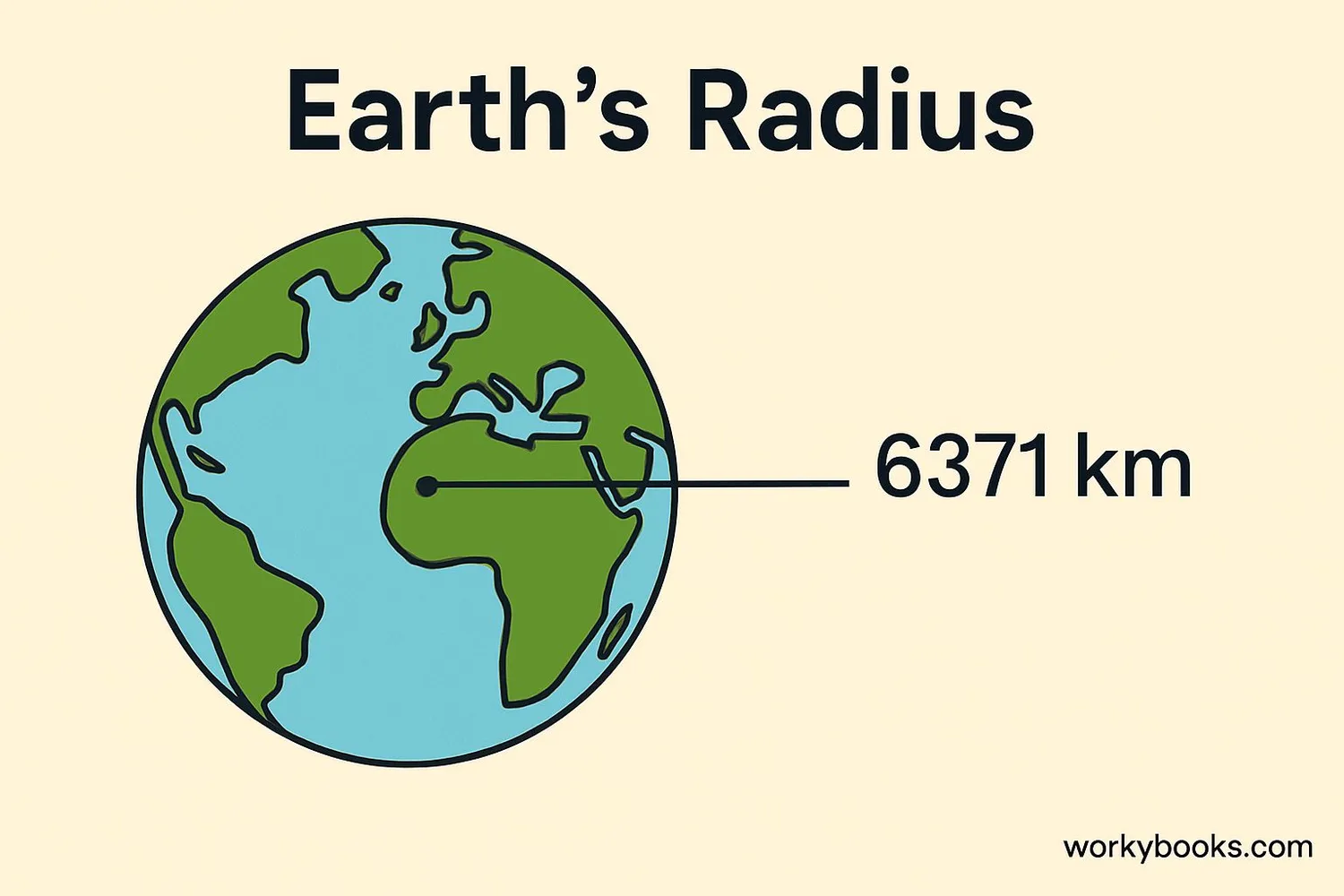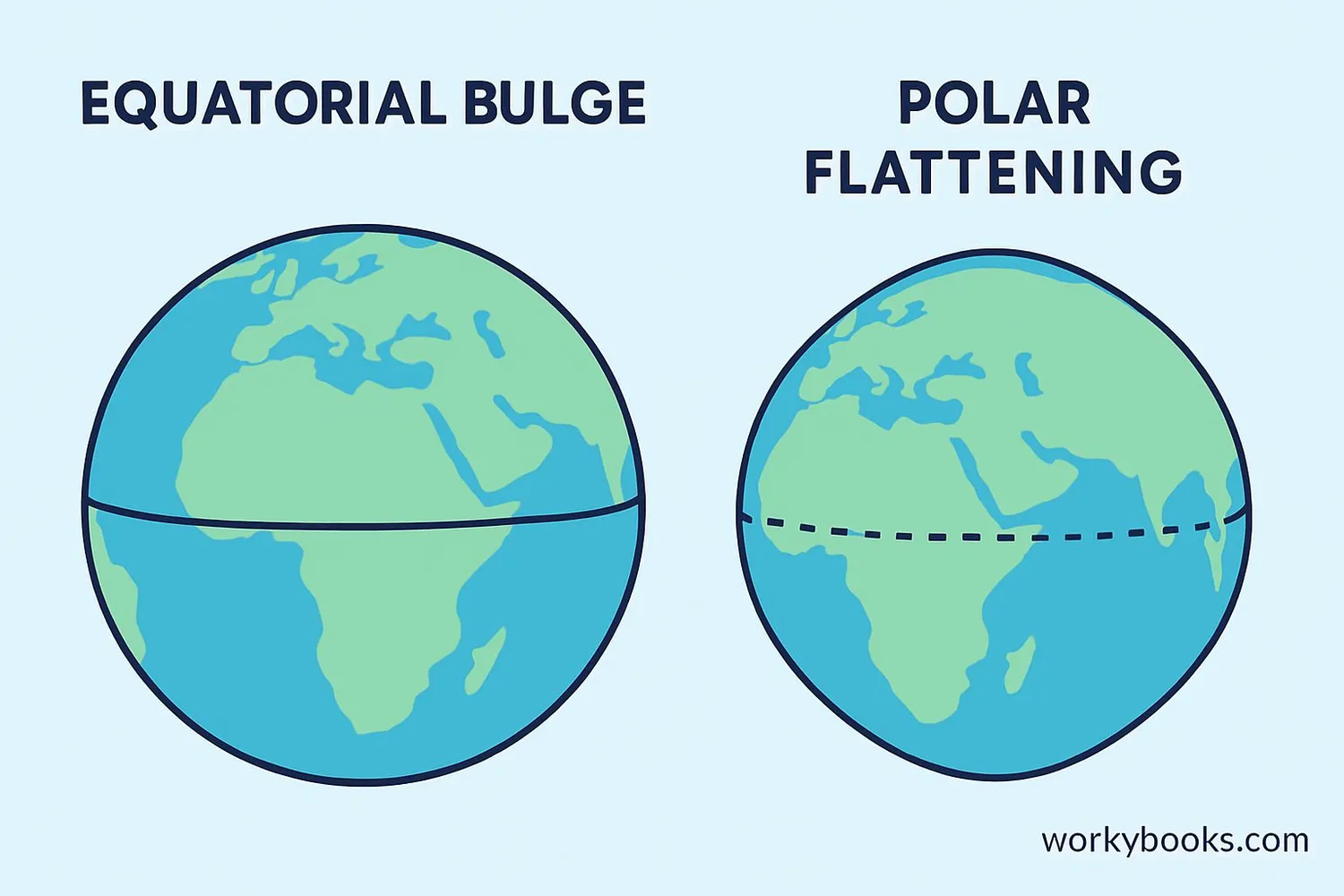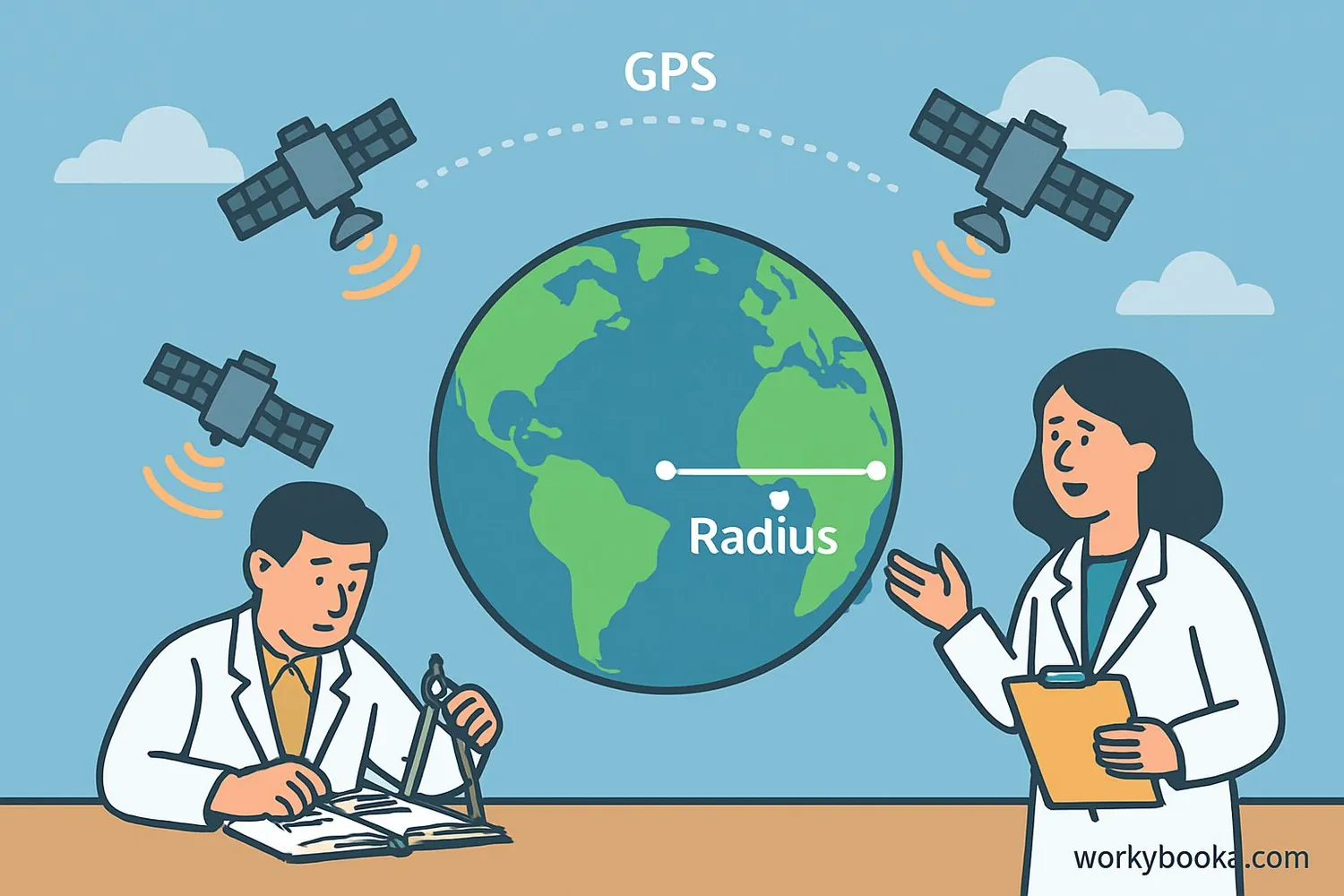Radius of Earth - Definition, Examples, Quiz, FAQ, Trivia
Discover how big our planet really is and why its shape matters!
What is Earth's Radius?

Earth's radius is the distance from the very center of our planet to its surface. Scientists call this terrestrial radius. It's about 6,371 kilometers (km) on average! That's the same as:
• Driving from New York to California 5 times
• Stacking about 5,000 Empire State Buildings
• Walking non-stop for 53 days without sleeping!
But Earth isn't a perfect sphere like a basketball. It's actually slightly flattened at the top and bottom and bulges around the middle. This special shape is called an oblate spheroid.
Science Fact!
If you could drive straight to Earth's center at highway speeds, it would take about 4 days to reach the core!
Different Types of Earth's Radius

Because Earth isn't perfectly round, scientists use different measurements for its radius depending on where they measure:
Equatorial Radius
Measured from center to equator: 6,378 km
Polar Radius
Measured from center to North Pole: 6,357 km
Mean Radius
Average of three dimensions: 6,371 km
The difference between equatorial and polar radius is about 21 km - that's taller than 2 Mount Everests stacked on top of each other! This flattening happens because Earth spins on its axis, causing material to bulge out at the equator.
Most of the time when people talk about "Earth's radius," they mean the mean radius of 6,371 km. This average measurement is used in most calculations about our planet.
Size Comparison
Earth's equatorial bulge is so large that if Earth were the size of a basketball, the difference between the equator and poles would be about the thickness of a nickel!
Why Earth's Radius Matters

Knowing Earth's exact radius is more important than you might think! Here's why scientists care so much about this measurement:
GPS & Navigation
GPS satellites need Earth's exact shape to calculate positions accurately
Mapping & Cartography
Creating accurate maps requires knowing Earth's true dimensions
Space Exploration
Rocket launches need precise measurements to reach orbit
Understanding Earth's radius also helps scientists:
• Calculate Earth's mass and density
• Understand gravity at different locations
• Study how Earth's shape changes over time
• Model climate patterns and ocean currents
The science of measuring Earth's size and shape is called geodesy. Geodesists use satellites, lasers, and mathematics to constantly refine our understanding of Earth's dimensions.
Earth's Radius Quiz
Test your knowledge about Earth's radius with this fun quiz! Answer all 5 questions to see how much you've learned.
Frequently Asked Questions
Here are answers to some common questions about Earth's radius:
Fun Earth Radius Trivia
Discover some amazing facts about Earth's size and shape!
Ancient Measurement
The first person to calculate Earth's radius was the Greek mathematician Eratosthenes around 240 BC. Using shadows in wells, he calculated a value within 15% of the actual measurement!
Smooth Planet
Compared to its size, Earth is smoother than a billiard ball! If Earth were shrunk to the size of a cue ball, the highest mountains and deepest oceans would be less than the tiny bumps on the ball's surface.
Gravity Differences
Because of Earth's shape and rotation, you weigh slightly less at the equator than at the poles. A 150-pound person would weigh about 0.5 pounds less at the equator!
Precise Measurements
Modern satellites can measure Earth's radius with incredible accuracy - down to less than 1 centimeter! This helps scientists track sea level rise and other environmental changes.


